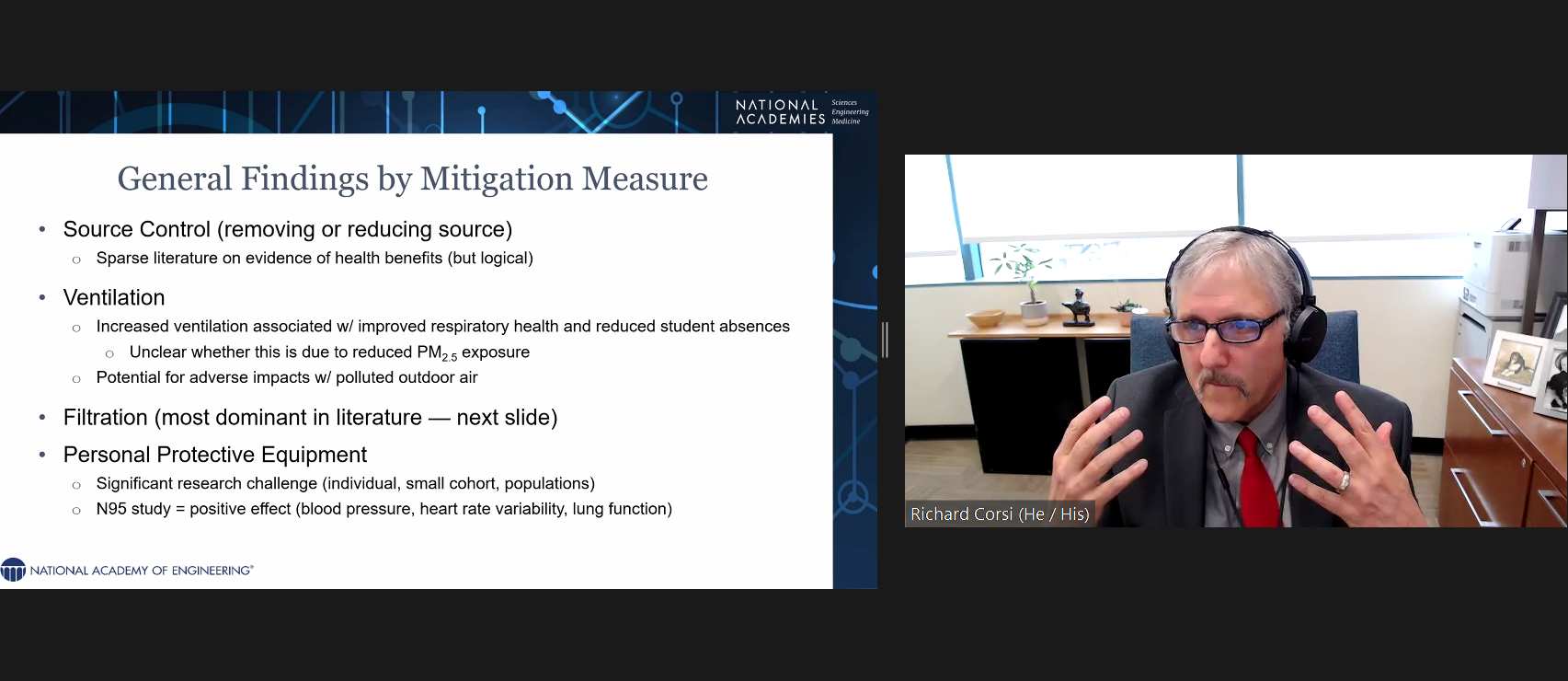
Public Health Officials Should Urgently Prioritize Reducing Exposure to Indoor Fine Particulate Matter, New Report Recommends
A new report from the National Academies of Sciences, Engineering, and Medicine recommends public health officials and other local and regional agencies take action to mitigate exposure to fine particulate matter indoors, prioritizing interventions among susceptible populations, including older adults, young children, and individuals with preexisting conditions. It specifically calls for action to reduce exposures to fine particulate matter in schools, including infectious aerosols — a step that research says has the potential to improve students’ health and performance.
Fine particulate matter has a diameter of 2.5 microns or less — at least 30 times smaller than the diameter of a single human hair — making it small enough to penetrate deeply into the respiratory system and, at its smallest, cross the blood-brain barrier. This can have effects on the respiratory, cardiovascular, and neurological systems. The report says there is currently a lack of centralized responsibility for dealing with particulate matter indoors, and calls for more unified study and responses.
Practical mitigation of indoor fine particulate matter is currently possible, the report says.

"We already have effective mitigation tools available to reduce fine particulate matter exposure indoors — we just need to use them," said Richard L. Corsi, dean of engineering at the University of California, Davis, and chair of the committee that wrote the report. "There are technical improvements that can be made to reduce exposure and increase the efficiency of filtration systems, but primarily we need more targeted research about indoor particulate matter and urgent and organized action to improve public health."





